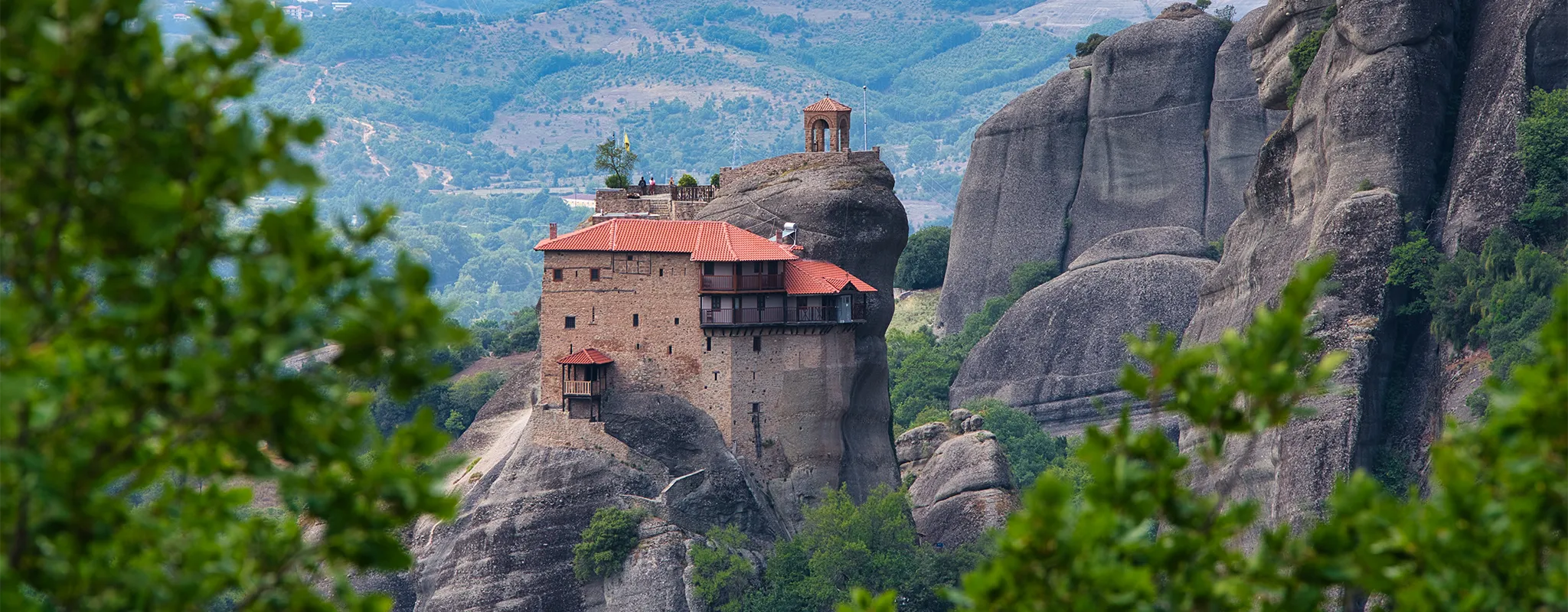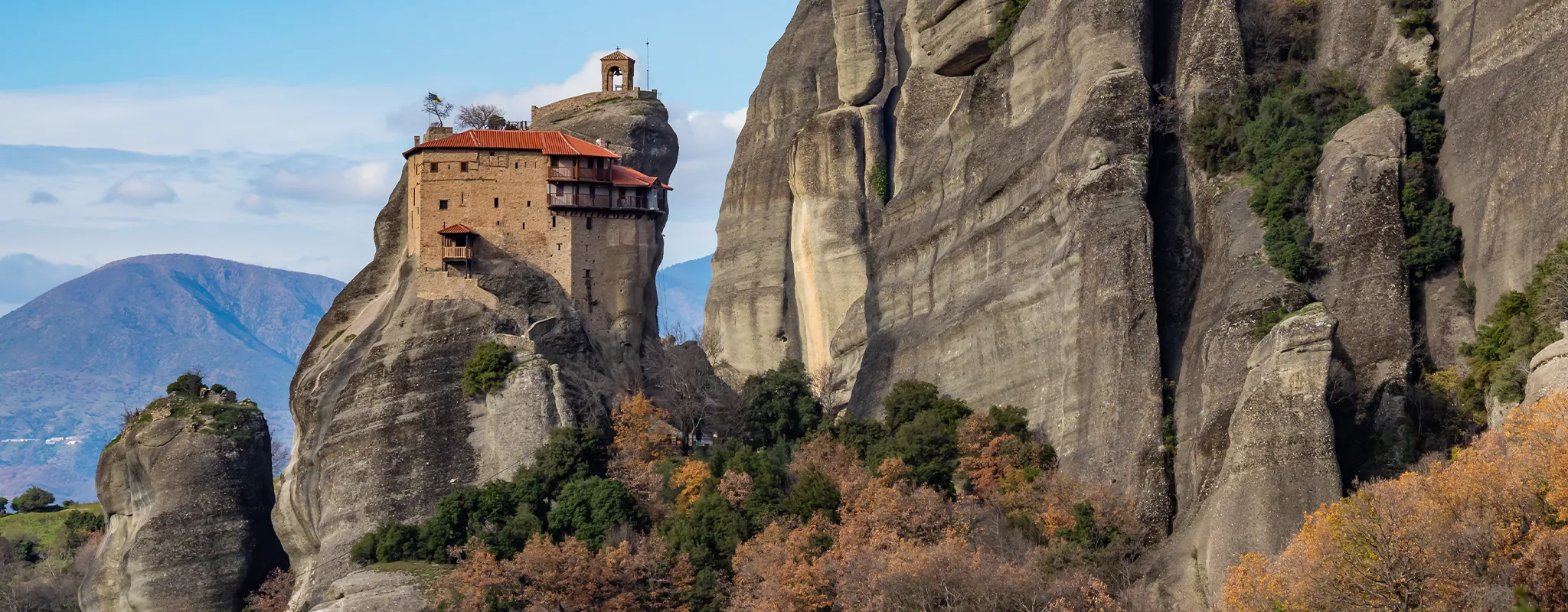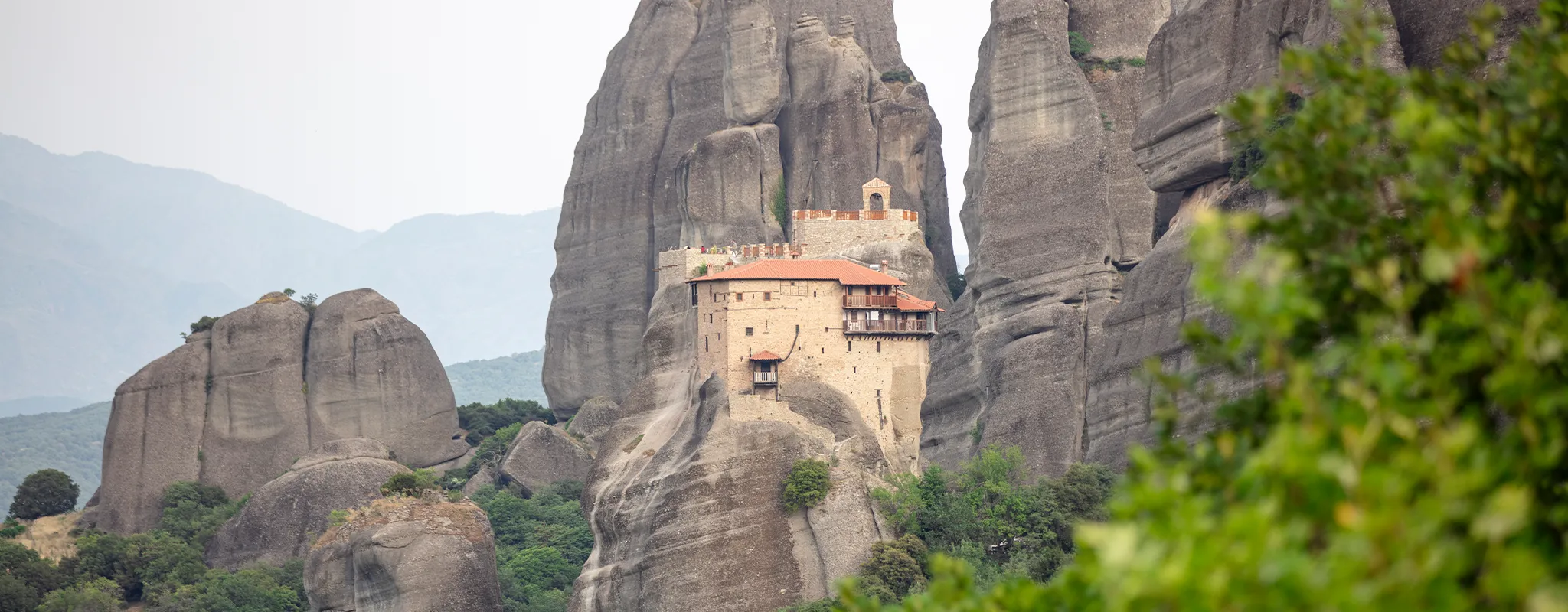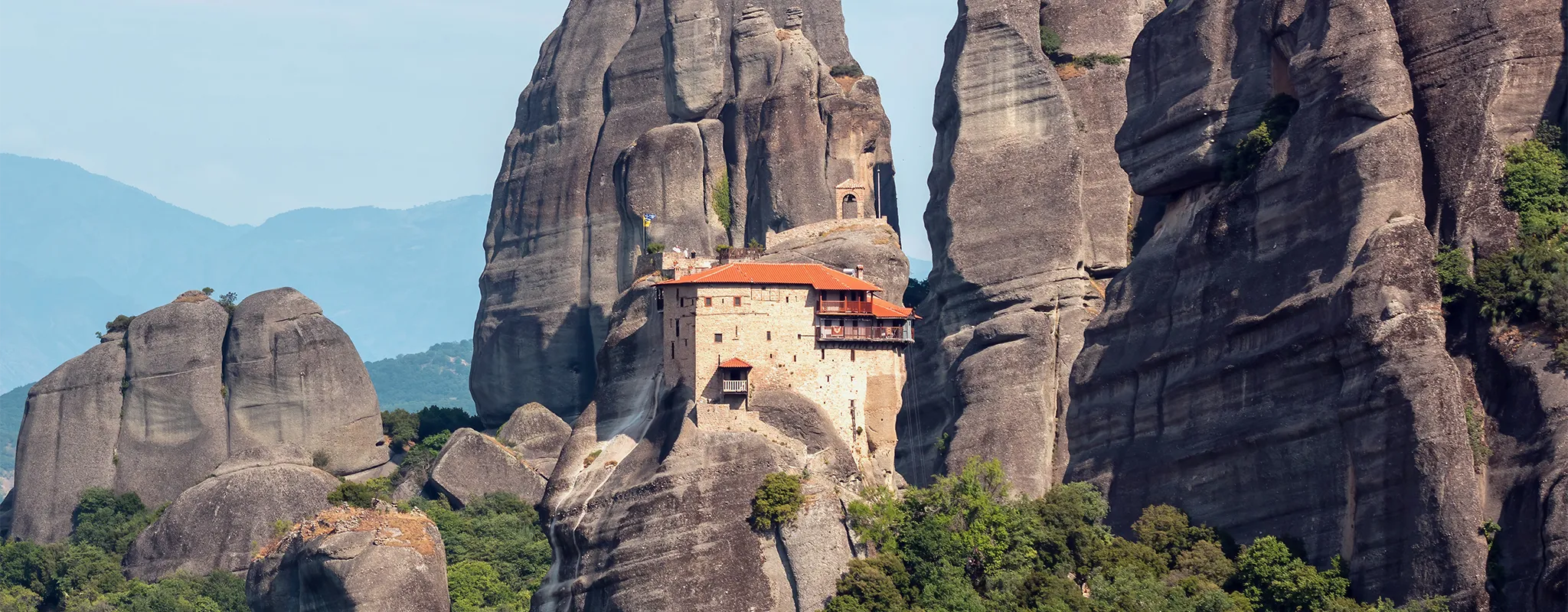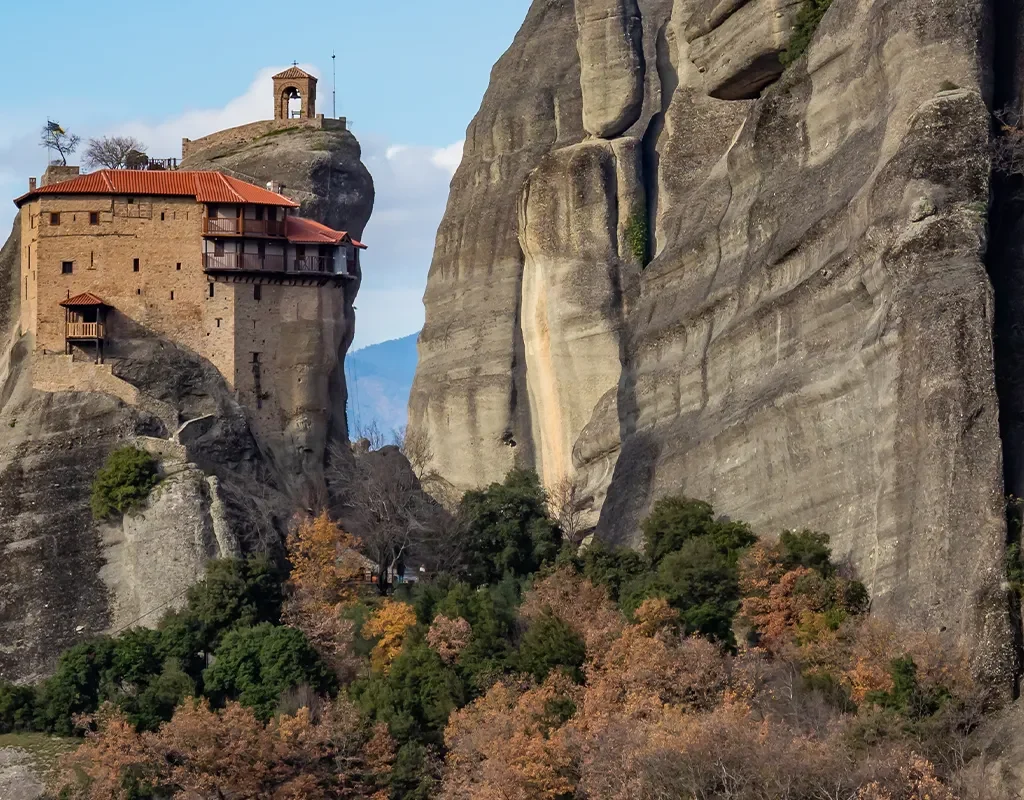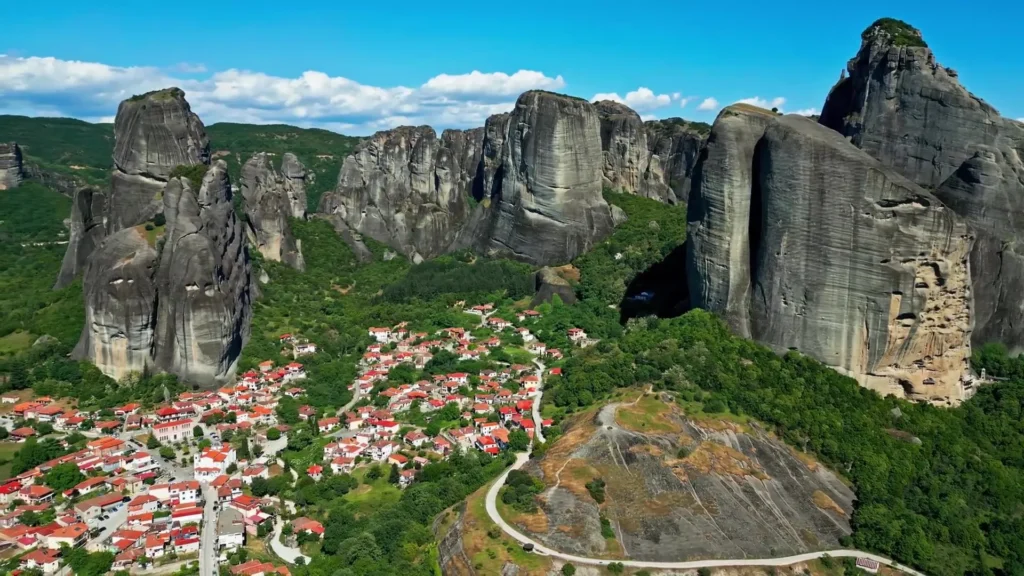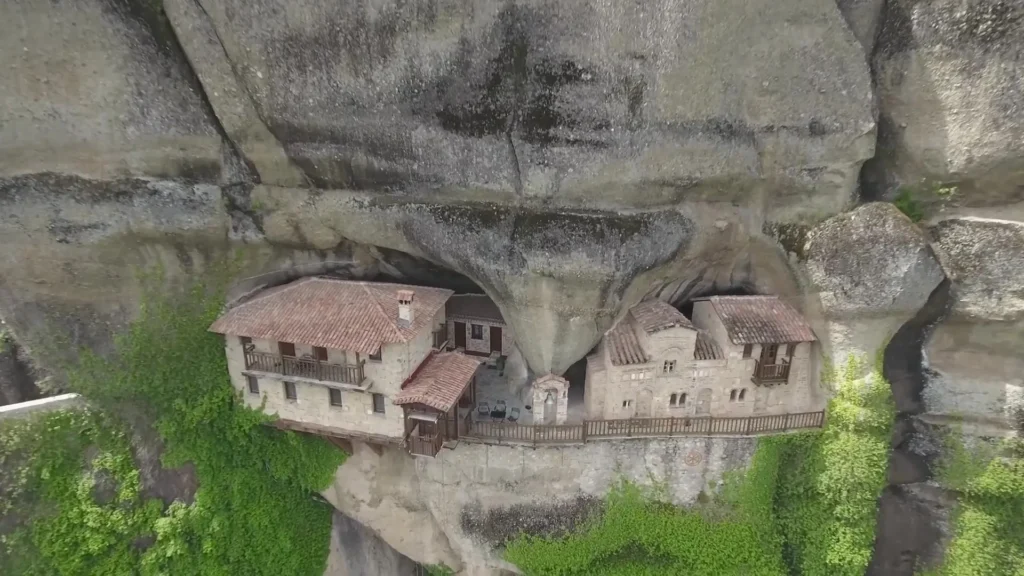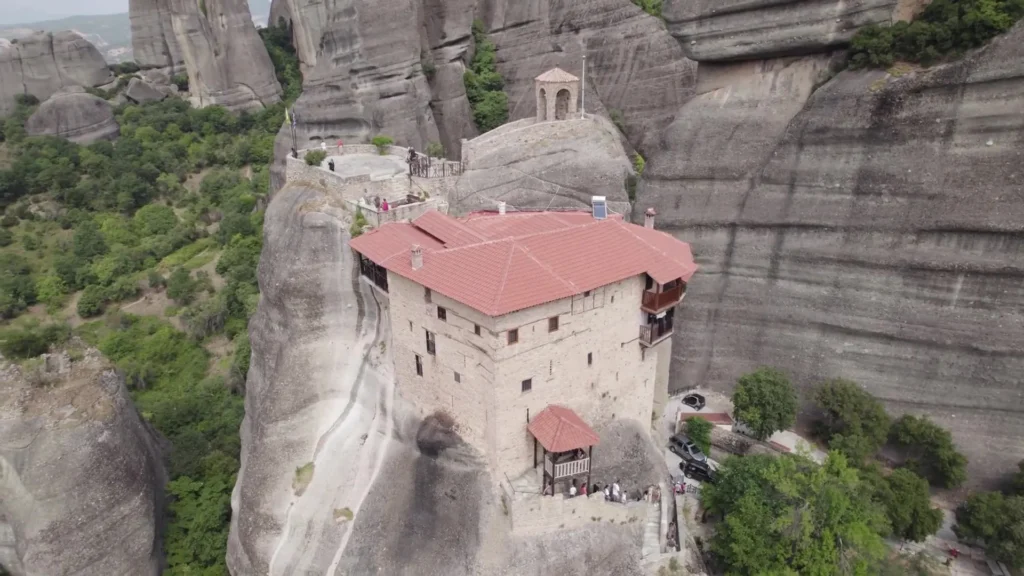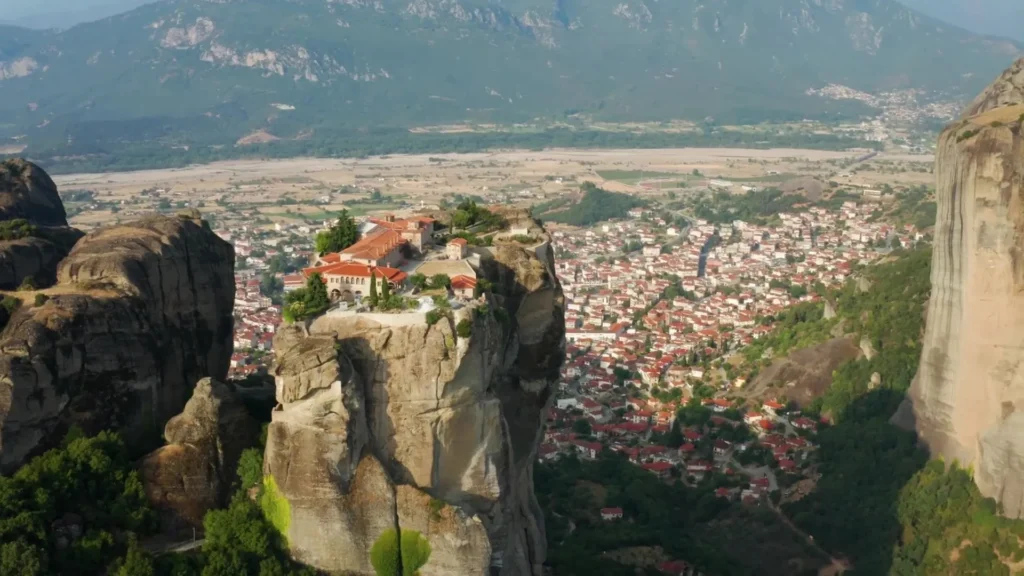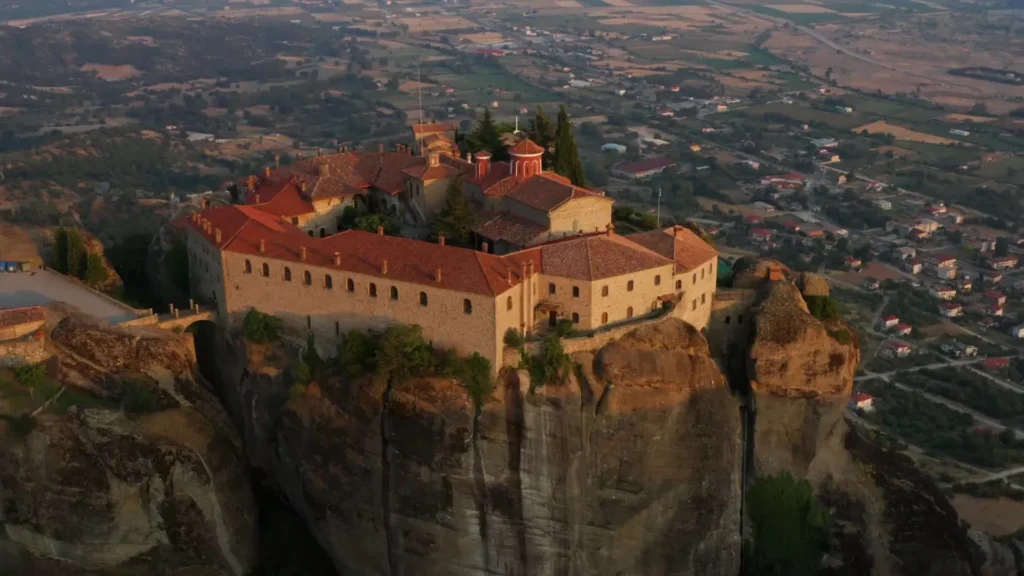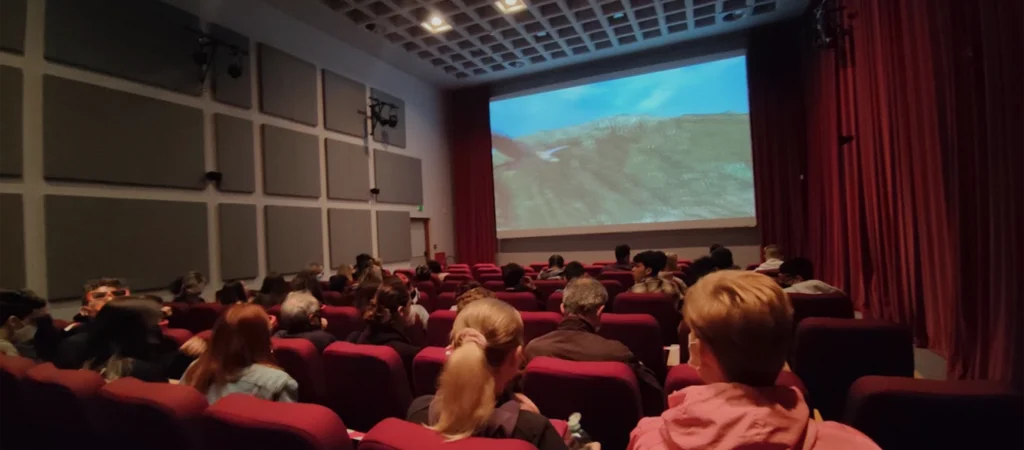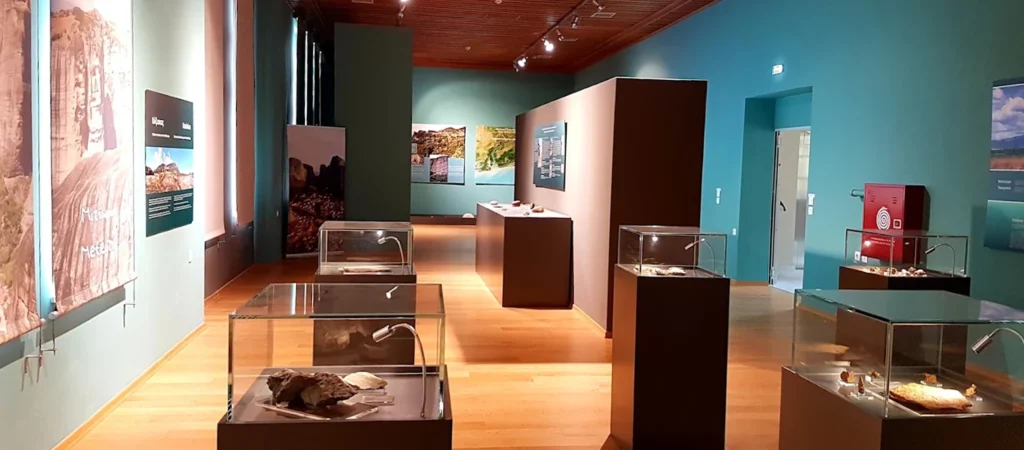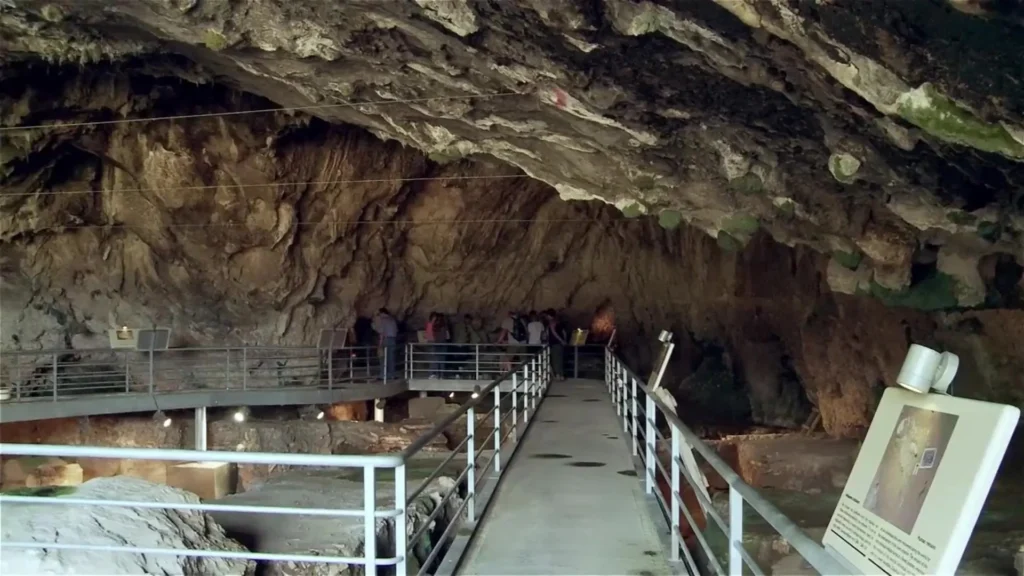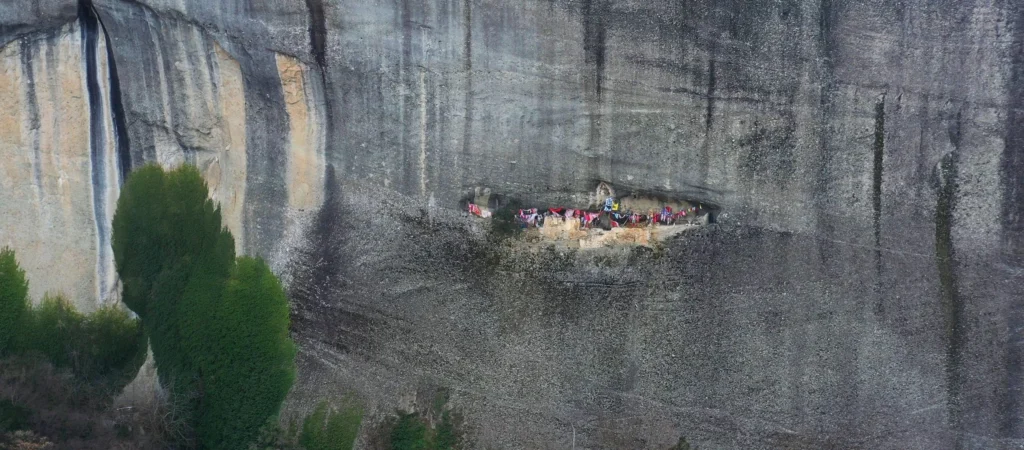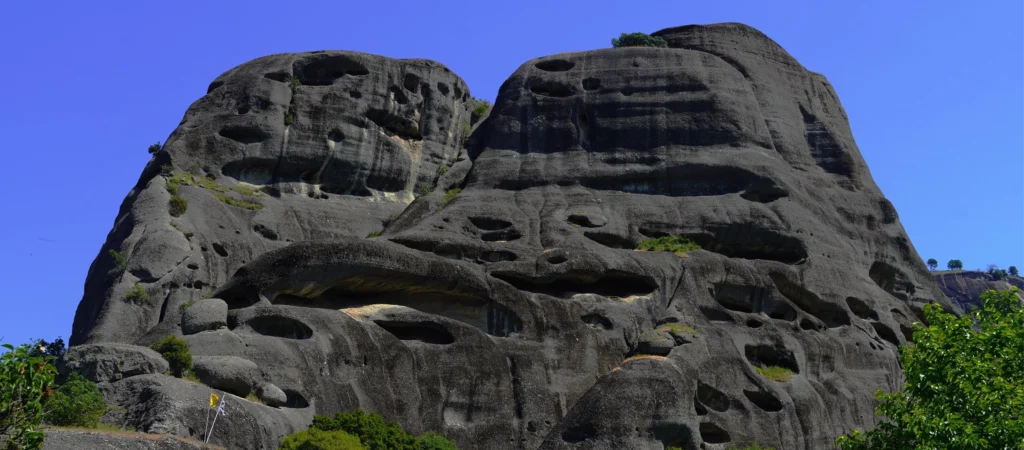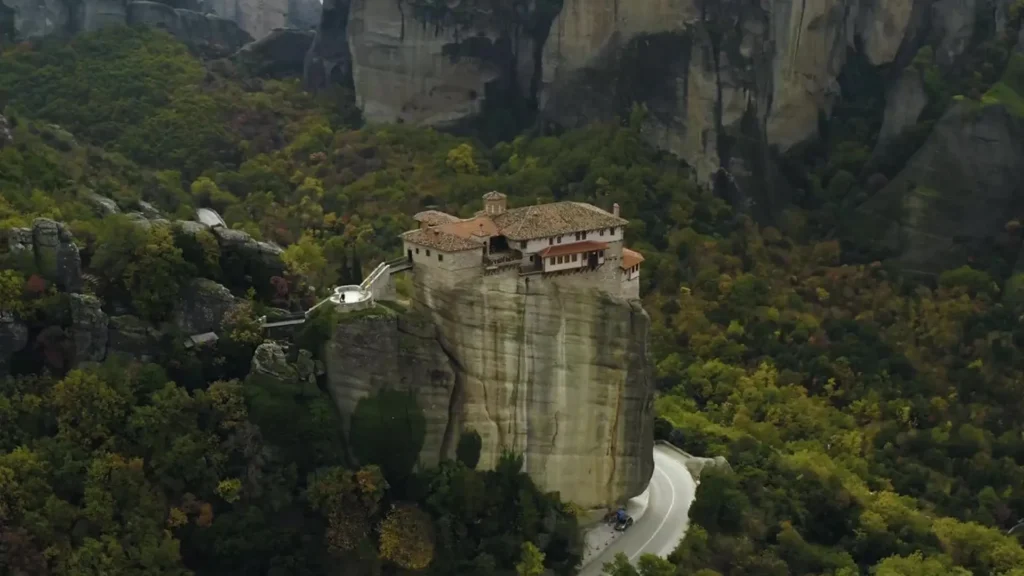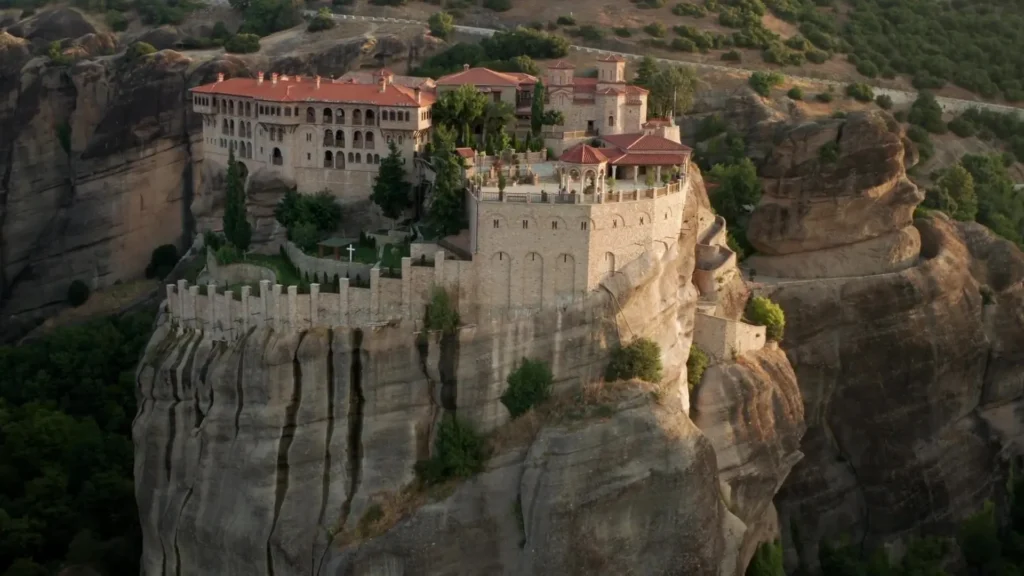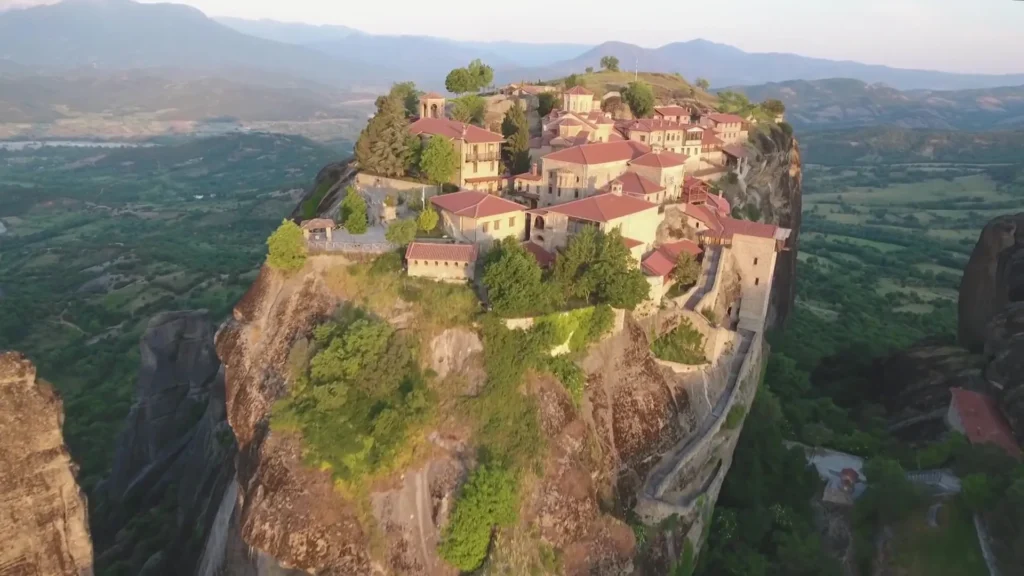Good to Know
- Admission: Ticket required
- Stairs: +85
- Accessibility: Not accessible
- Dress code: Special dress code required
- Restrooms: Available
- Museum: Available
- Gift Shop: Available
Visiting Hours (UTC+2/UTC+3)
Summer: 1/4 - 31/10
- Monday 09:00 - 17:00
- Tuesday 09:00 - 17:00
- Wednesday 09:00 - 17:00
- Thursday 09:00 - 17:00
- Friday CLOSED
- Saturday 09:00 - 17:00
- Sunday 09:00 - 17:00
Winter: 1/11 - 31/3
- Monday 09:00 - 15:00
- Tuesday 09:00 - 15:00
- Wednesday 09:00 - 15:00
- Thursday 09:00 - 15:00
- Friday CLOSED
- Saturday 09:00 - 15:00
- Sunday 09:00 - 15:00
Get to Know the Unique Architectural Marvel of
Saint Nicholas Anapafsas Monastery
Saint Nicholas Anapafsas Monastery is the first monastery you encounter as you ascend from Kastraki into Meteora, and it stands out for its unique architecture: each floor is built one on top of the other, following the narrow summit of the rock.
Monastic life here began in the 14th century, while the present form of the monastery was shaped in the early 16th century thanks to Saint Dionysios, Metropolitan of Larissa, and Monk Nikanor, Exarch of Stagon. They built the church we see today, decorated in 1527 by the renowned Cretan iconographer Theophanis Strelitzas—one of his earliest signed fresco cycles.
At the entrance of the monastery, you’ll find the chapel of Saint Anthony, with remnants of 14th-century frescoes, and the old treasury where precious relics were once kept. On the next floor is the main church, a modest space with a spacious narthex. Higher up are the former dining hall, the guesthouse, the ossuary, and the chapel of Saint John the Baptist (renovated in 1971).
The frescoes of the church are considered some of the most important examples of post-Byzantine art, standing out for their expressive themes and unique style. Highlights include the Last Judgment, the Dormition of Ephraim the Syrian, and the rare depiction of Adam naming the animals. Among the saints you’ll see the monastery’s great benefactors, Saint Dionysios and Nikanor, alongside the Virgin Mary and Saint Athanasios the Meteorite.
In the dome, the Pantokrator is depicted, while scenes from the Passion and Resurrection of Christ adorn the rest of the church. The technique and style of Theophanis reflect the brilliance of the Cretan School. After years of abandonment, the monastery was restored in the 1960s and today once again welcomes visitors seeking art, history, and spirituality in Meteora.
